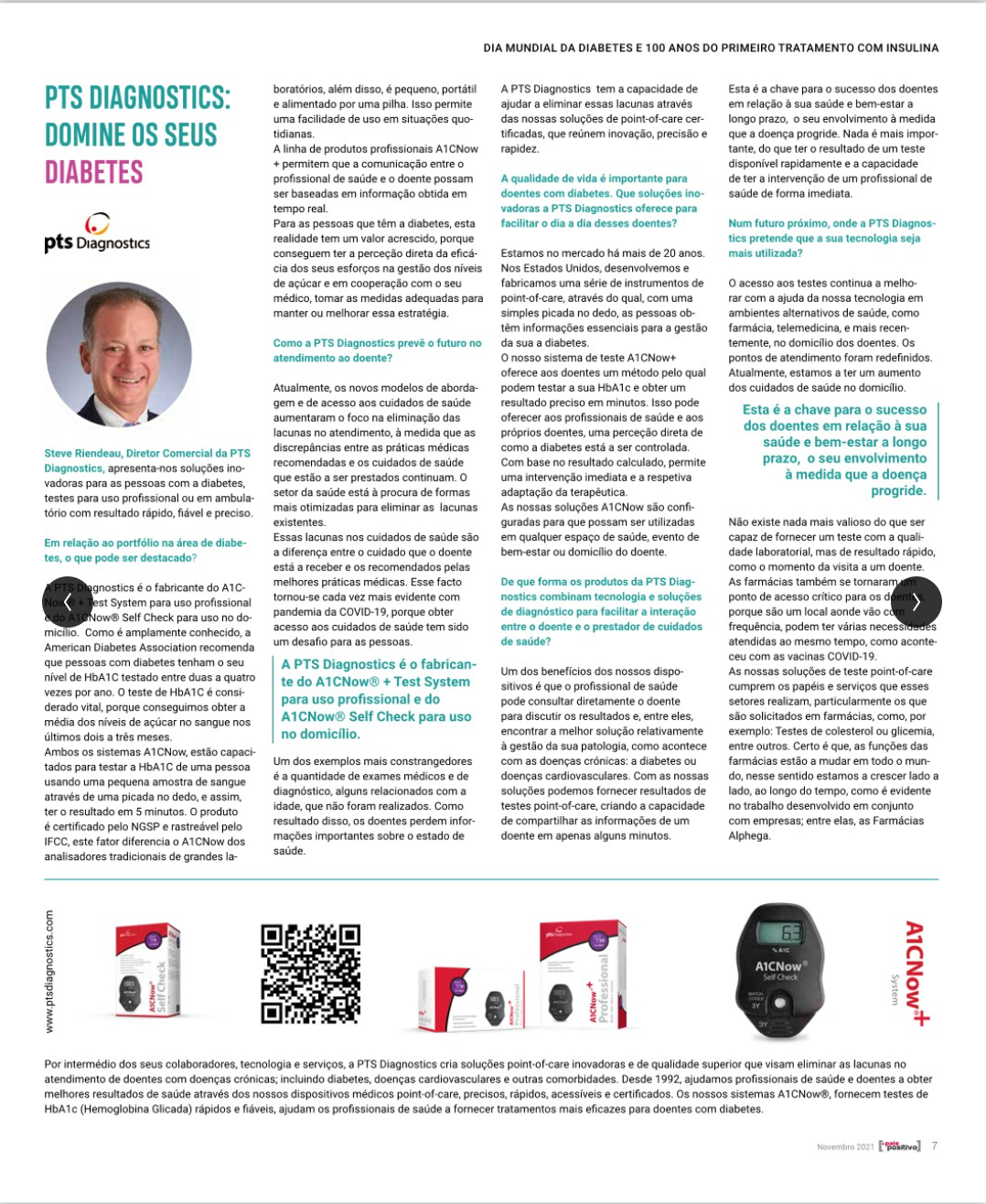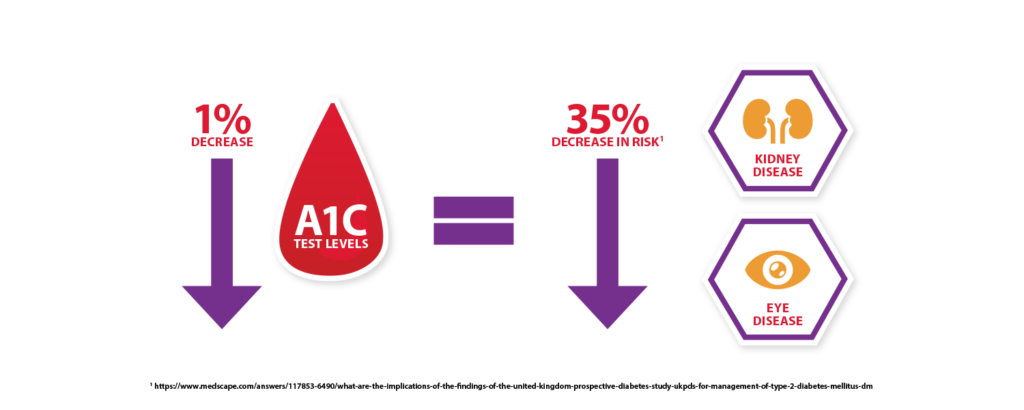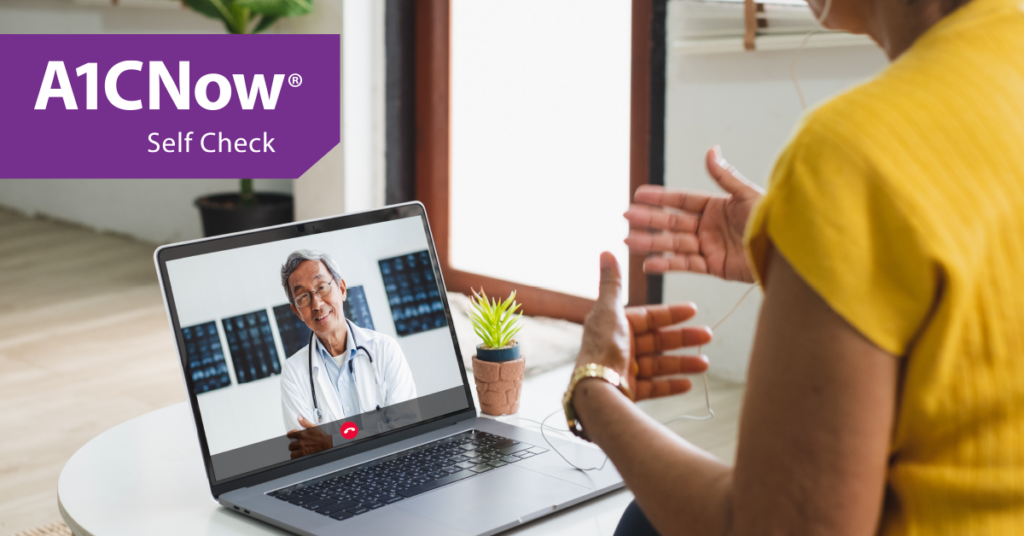Steve Riendeau on Pais Positivio
PTS Diagnostics CCO Steve Riendeau
Featured in País Positivo
The following interview with PTS Diagnostics CCO Steve Riendeau recently appeared in the November issue of País Positivo, a monthly editorial magazine on current affairs in Portugal. The original article, written in Portuguese, can be found here. The text below is an English translation.
Master Your Diabetes

Steve Riendeau, Commercial Director of PTS Diagnostics, presents us innovative solutions for people with diabetes, tests for professional or outpatient use with fast, reliable and accurate results.
With regards to the portfolio in the field of diabetes, what can be highlighted?
PTS Diagnostics is the manufacturer of the A1CNow®+ Test System for professional use and the A1CNow® Self Check at-home systems. Both systems are able to test a person’s A1C using a small fingerstick blood sample and calcuate the result in 5 minutes. The product is NGSP-certified and IFCC-traceable. What sets A1CNow apart from traditional large lab analzyers is that it is small, portable, and battery-powered. Thisallows for ease of use in a variety of settings.
The A1CNow+ professional product line allows for informed conversations to take place at the point of care between physician and patient. They can discuss how a patient is managing their diabetes in minutes and not have to wait a few days for the test results to come back.
For many individuals living with diabetes thi could bes as a “game changer” in that they can have a direct insight into the effectiveness of their glucose management efforts and take the proper actions to either maintain or improve those efforts it moving forward.How is PTS Diagnostics addressing the future of patient care?
At present, new models of addressing and accessing patient health care have led to an increased focus on closing gaps in care as discrepancies between the recommended medical practices and the care that’s being provided continue. The health care industry is in search of better ways to fill in the gaps.
Those gaps in care are the difference between the health care that we are receiving and what is considered medical best practices. These are becoming increasingly an issue due to the current COVID-19 environment, because getting access to health care has been more challenging for people.
An examples of a gap in care would be where you are supposed to be getting an age-related screening and you’ve missed that screening. As a result, you may be missing some insight into your health
We have the ability to help close those gaps utilizing our point of care solutions. PTS Diagnostics, bring certified accuracy, precision and speed together to innovate point of care.
Quality of life is important for diabetes patients. In response, what innovative solutions does PTS Diagnostics offer in order to facilitate the day-to-day life of these patients?
We have been in business for well over 20 years. Here in the U.S., we develop and manufacture a series of point-of-care instruments through which, with a simple fingerstick, people can gain actionable insights into their health.
Our A1CNow+ test system offers those living with diabetes a method by which they can test their HbA1c and obtain anaccurate HbA1c result in a matter of minutes. This can give both healthcare physicians treating their diabetic patients and the patients themselves, a direct look into how a patient’s diabetes is being managed. Based upon the result calculated, it allows for face-to-face dialogue and consultation between the healthcare provider and the patient.
Our A1CNow solutions are configured so they can be utilized in a professional healthcare facility, wellness event, or inside a patient’s home.
How do PTS Diagnostics products combine technology and diagnostic solutions to facilitate patient/healthcare provider interaction?
One of the benefits of our devices is that the professional user can have consultation directly with the patient and discuss their numbers, their
results, their understanding of how they’re managing these diseases. With our
diagnostics solutions, portable technology can deliver test results all at the
point of care, creating the ability for a patient’s medical information to be
shared in a matter of minutes rather than several days.
The key to success for patients in their long term health and well-being is their engagement or disease processes. There’s nothing that maximizes that better than having results of a test readily available and immediately discussed with the provider through its people,
technology and service.
Where do you see your technology being utilized more in the future?
Access to testing continues to improve with the help of our technology in alternate health care settings such as the pharmacy, the workplace, telemedicine, and most recently inside the patient’s homes. The points of care have been redefined. Presently, we are now looking an increase in the care at home, with options from visiting nurses and other entities.
There is nothing more valuable than being able to provide a lab test at that time of that visit. Pharmacies have now become a critical access point for patients because they have a tendency to go there frequently and can get several needs met at one time, as we’ve seen with COVID-19 vaccinations here.
We see our point of care testing solutions fulfilling possible new roles and services that these sectors, particularly ones that the pharmacies are being asked to provide by terms of testing for cholesterol, glucose, etc. As the roles of the pharmacies are changing worldwide, we are growing with them through this time as evident by the work we’ve been focused on with groups such as Alphega Pharmacy.






